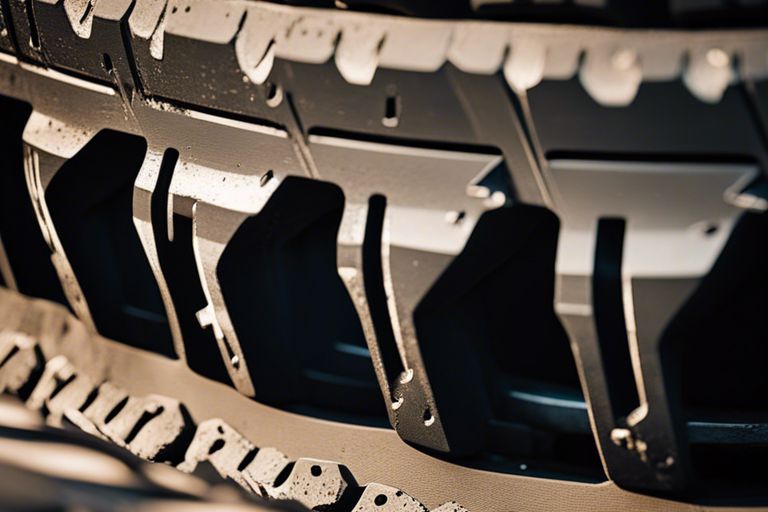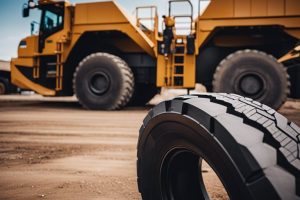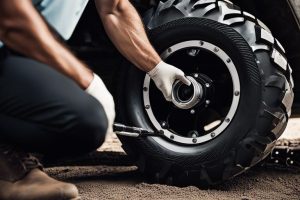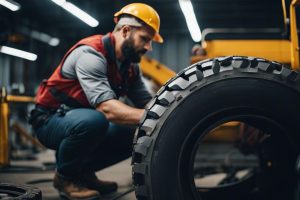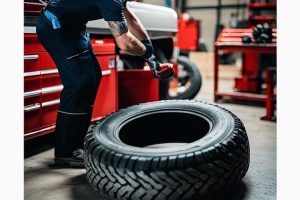Discerning when it’s time to replace your Off-the-Road (OTR) tires is crucial for safety and efficiency on heavy equipment. Monitoring your OTR tire’s condition is necessary to prevent accidents, downtime, and unnecessary expenses. Recognizing the warning signs early can save you from potential hazards and setbacks. Paying attention to key indicators can help you determine when it’s time for new OTR tires, ensuring optimal performance and safety for your vehicles. Learn the telltale signs that your OTR tires need replacement and stay ahead of potential issues.
Key Takeaways:
- Monitor Tread Wear: Regularly check the tread depth of OTR tires to ensure they are not worn down beyond the recommended limit.
- Inspect for Cracks and Cuts: Look for any visible signs of cracking, cuts, or bulges on the sidewalls of OTR tires, as these indicate potential damage or wear.
- Check for Vibration or Unusual Noises: Pay attention to any vibrations or unusual noises coming from the tires while in use, as these can be signs of tire irregularities or issues that require replacement.
Recognizing the Signs of Tire Wear
You need to pay close attention to the condition of your off-the-road (OTR) tires to ensure safe operation. Over time, wear and tear can compromise the performance of your tires and jeopardize the safety of your vehicle. By recognizing the signs of tire wear early on, you can take the necessary steps to replace them before they become a hazard on the job site.
Tread Depth Indicators
One of the most common ways to determine if your OTR tires need replacement is by checking the tread depth indicators. These indicators are built into the tread grooves and are designed to show when the tire is worn out. If the tread depth is level with these indicators, it is crucial to replace the tire immediately to ensure proper traction and grip on various surfaces.
Another method to check tread depth is by using a tread depth gauge. Insert the gauge into the grooves to measure the depth accurately. Keeping an eye on the tread depth regularly can help you identify gradual wear and plan for replacements in advance, avoiding any unexpected tire failures.
Visible Damages and Abnormal Wear Patterns
An important aspect of recognizing tire wear is inspecting for visible damages and abnormal wear patterns. Look for cuts, cracks, bulges, or punctures on the tire surface. These damages can weaken the tire structure and lead to unexpected blowouts if not addressed promptly. Additionally, pay attention to abnormal wear patterns such as uneven wear across the tread, which could indicate improper inflation, misalignment, or suspension issues.
To ensure the longevity and safety of your OTR tires, conduct regular visual inspections and address any visible damages immediately. Ignoring signs of wear and tear can worsen the condition of the tires, putting you at risk of accidents and costly downtime. By staying vigilant and proactive in replacing worn-out tires, you can maintain optimal performance and safety on the job site.
How-To Assess Tire Performance
While Tire Replacement Guide: Why & When You Should … is a crucial aspect of maintaining vehicle safety, knowing how to assess tire performance is equally important. By keeping an eye on various factors, you can determine the condition of your tires and ensure they are safe for the road.
Tips for Checking Air Pressure
Checking air pressure regularly is vital for optimal tire performance. Use a tire pressure gauge to measure the pressure in each tire, including the spare. Proper inflation ensures even wear and helps prevent blowouts. Additionally, inspect the tread for any uneven wear patterns which could indicate improper inflation.
- Air pressure gauge
- Even wear
- Blowouts
Knowing how air pressure affects tire performance is crucial for maintaining safety on the road.
Factors Affecting Tire Longevity
Factors such as driving habits, road conditions, and proper maintenance can all impact the longevity of your tires. Driving at high speeds, harsh braking, and neglecting regular maintenance can shorten the lifespan of your tires. Proper alignment and rotations can help extend the life of your tires.
- Driving habits
- Road conditions
- Proper maintenance
Though some factors affecting tire longevity are beyond your control, proper maintenance and care can significantly impact the lifespan of your tires. Regular inspections and rotations are key to prolonging tire life.
Any signs of uneven wear or bulges should be addressed immediately to prevent potential blowouts or loss of control while driving.
When to Replace Your OTR Tires
Now, let’s examine into the critical aspect of knowing when it’s time to replace your OTR tires. By being proactive and vigilant about monitoring the condition of your tires, you can ensure the safety and performance of your heavy equipment.
Industry Standards for Tire Replacement
Replacement of OTR tires is typically recommended under certain industry standards. Tires should be replaced when they reach a certain tread depth, usually when it reaches 25% to 30% of the original depth. Tread wear indicators are designed to show when tires have worn down to this level, signaling the need for immediate replacement.
Replacement of tires is also recommended if they exhibit any signs of irreparable damage such as punctures, cuts, bulges, or cracks on the sidewall. These issues can compromise the structural integrity of the tire, leading to potential blowouts or accidents on the job site.
Making the Decision: Repair or Replace?
Replace Faced with the decision of whether to repair or replace a damaged OTR tire, it’s crucial to consider the extent of the damage and the safety implications. While minor punctures or cuts can sometimes be repaired, it’s vital to assess whether the repair will compromise the overall integrity of the tire. Safety should always be the top priority when making this decision.
The likelihood of a successful repair and the remaining tread life of the tire are also significant factors to consider. Consulting with a professional tire technician can provide valuable insights and guidance in making the best decision for your specific situation.
Preventive Measures and Maintenance Tips
Keep a close eye on your OTR tires by following these preventive measures and maintenance tips:
- Regularly check tire pressure to ensure they are properly inflated
- Inspect tires for any signs of wear and tear, such as cracks, bulges, or punctures
- Rotate tires regularly to ensure even wear
- Keep tires clean to prevent debris buildup
- Store tires in a cool, dry place away from sunlight when not in use
After implementing these preventive measures, you can significantly extend the lifespan of your OTR tires.
How-To Implement Routine Tire Care
An crucial aspect of maintaining OTR tires is implementing routine tire care. This includes regular inspections, proper inflation, and tire rotations. By staying on top of these tasks, you can catch any issues early and prevent premature wear and tear.
Strategies to Extend Tire Life
Any vehicle owner can benefit from adopting strategies to extend the life of their OTR tires. This includes proper tire maintenance, regular inspections, and driving habits. By taking care of your tires and driving responsibly, you can ensure they last longer and perform better on the road.
Tire pressure, proper alignment, and load capacity are some of the key factors that contribute to tire longevity. By paying attention to these factors and following recommended guidelines, you can maximize the lifespan of your OTR tires.
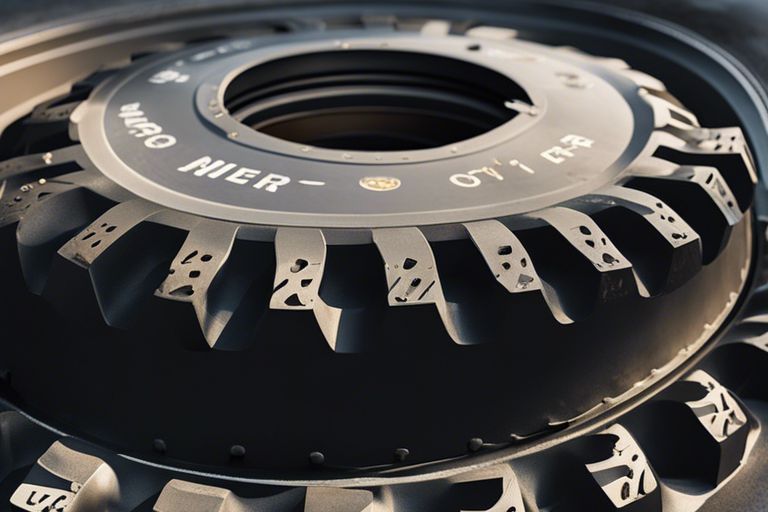
2. Measure tread depth using a depth gauge tool.
3. Look for cracks, cuts, or punctures on the tire surface.
4. Monitor for uneven wear patterns on the tires.
5. Inspect for bulges or blisters on the tire walls.
6. Pay attention to vibration, noise, or handling issues while driving.
Summing up
The signs discussed in this article can help you identify when your OTR tires need replacement. By paying attention to tread wear, cuts, bulges, vibrations, and air pressure, you can ensure the safety and longevity of your OTR tires. Regular inspections and timely replacements are crucial to prevent accidents and maintain optimal performance on off-the-road vehicles. Remember to consult with a tire professional if you notice any of these signs to ensure the appropriate action is taken.
FAQ
Q: What are the signs that indicate OTR tires need replacement?
A: Signs that indicate OTR tires need replacement include excessive wear on the tread, visible cracks or cuts on the tire, uneven tread wear, vibration or wobbling while driving, and frequent loss of tire pressure. It is crucial to inspect your OTR tires regularly for these signs to ensure your safety on the road.
Q: How often should I inspect my OTR tires for signs of replacement?
A: It is recommended to inspect your OTR tires for signs of replacement at least once a month or more frequently if you operate your vehicle in challenging terrain or under heavy load conditions. Regular inspections can help you identify any issues early on and prevent potential safety hazards.
What are the consequences of not replacing OTR tires when needed?
A: Failing to replace OTR tires when needed can lead to a higher risk of tire blowouts, loss of vehicle control, decreased traction on various terrains, and increased fuel consumption. Neglecting to replace worn-out OTR tires can compromise the overall performance and safety of your vehicle, emphasizing the importance of timely replacement.
